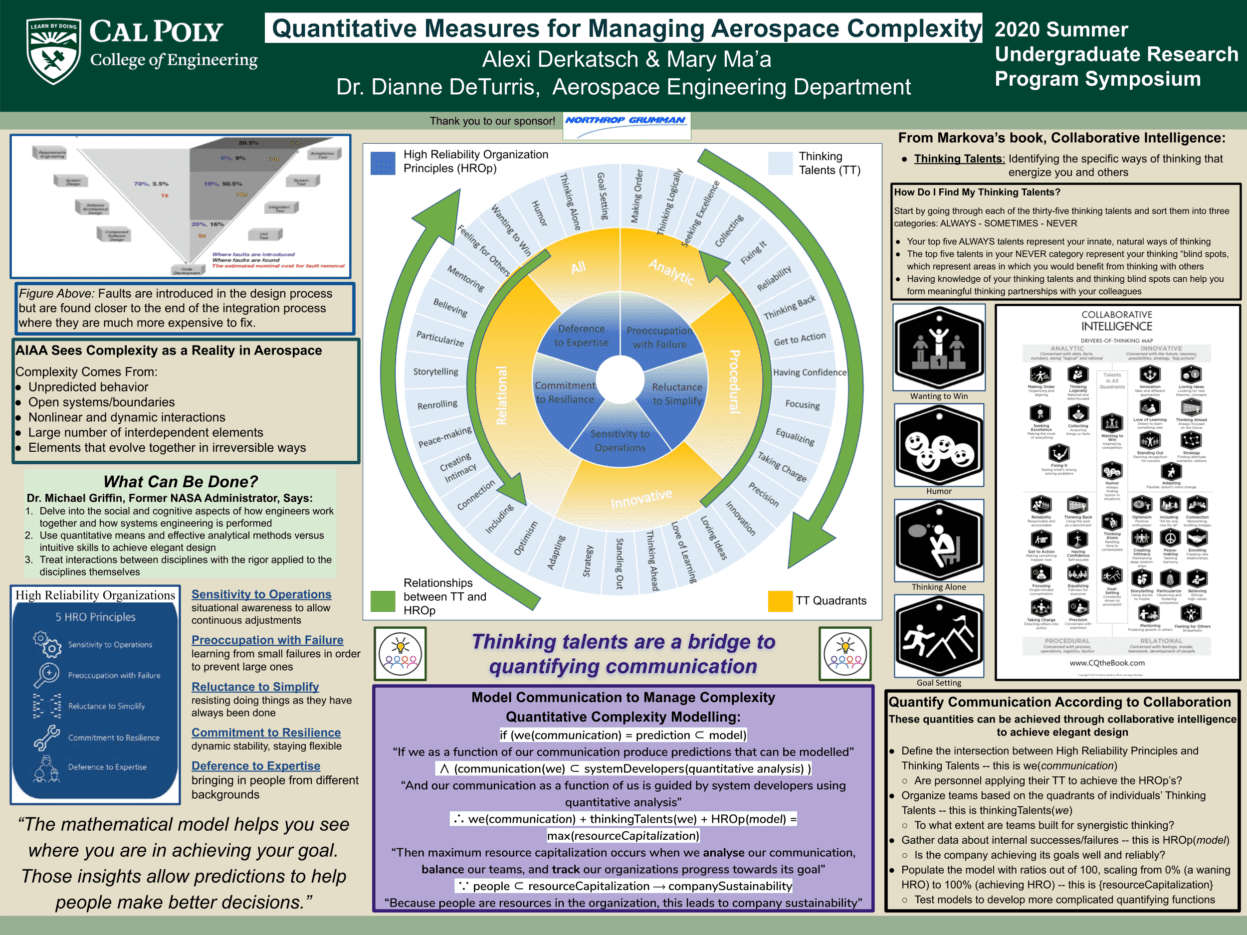Our Team

Mary Ma'a
Student Researcher
Aerospace Engineering senior concentrating in Astronautics with a minor in Communications. Bachelor’s degree will be completed in 2021, Master’s in Aerospace Engineering will commence in the Spring at Cal Poly with a graduation date of June 2022.

Dr. Dianne DeTurris
Fearless LEader
Aerospace Engineering Professor teaching aerothermodynamics and propulsion courses since 1998. Research focus in hypersonic airbreathing propulsion, rocket technology and complexity in engineered systems. Sometimes, she channels Miss Frizzle

Alexi Derkatsch
Student Researcher
Aerospace Engineering student studying B.S. in fourth year, pursuing an astronautics concentration. Minoring in STS Ethics (Science, Technology and Society).
Acknowledgements
We would like to thank Northrop Grumman for sponsoring our project.
The inspiration for this project comes from Dr. Michael Griffin, former NASA administrator, as well as Dawna Markova, and Angie McArthur, the authors of “Collaborative Intelligence, Thinking with People Who Think Differently”.


